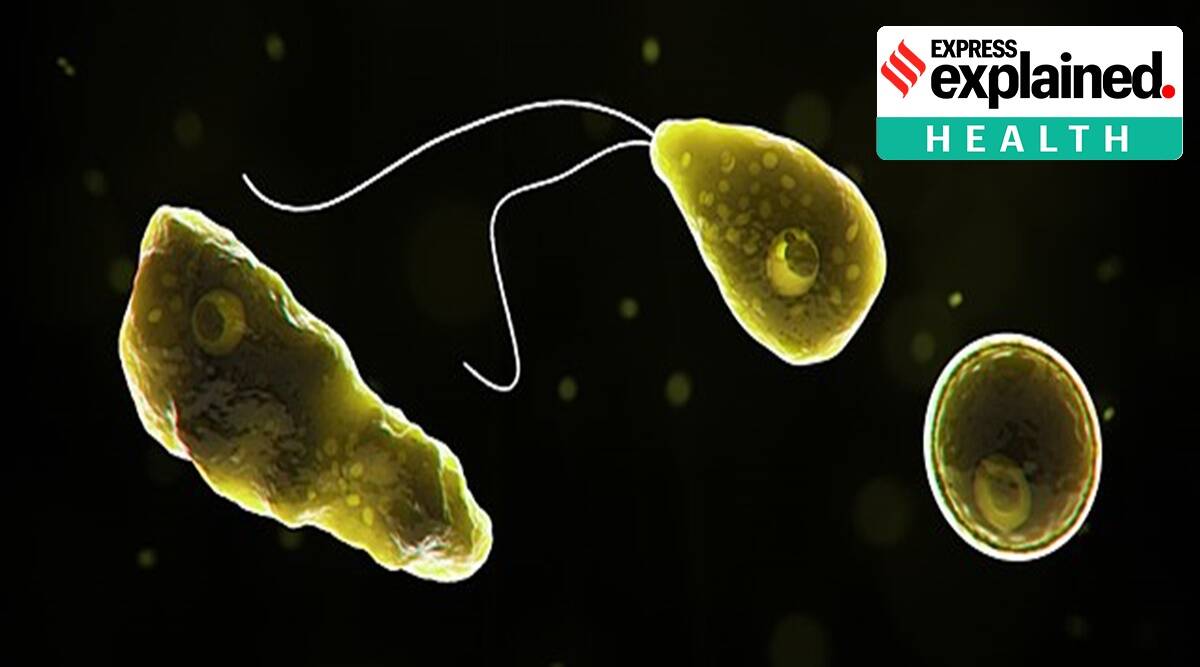30 Dec Naegleria Fowleri (Amoeba)
Naegleria Fowleri (Amoeba)
This article discusses Daily current affairs for UPSC” about Naegleria Fowleri (brain-eating amoeba) news in relation to the pharmacy sector and health science. In GS-3 and following content has relevance for UPSC.
For prelims: Facts about Naegleria fowleri (Amoeba)
For mains: GS-3, Biotechnology, Pharmacy, and health sector
Why in news:
The “brain-eating amoeba,” has been reported in South Korea for the first time.

Naegleria fowleri
About Naegleria Fowleri
- Amoebae are a particular kind of cell or unicellular creature that can change its shape, typically by extending and retracting pseudopods.
- Only one species of the amoeba, Naegleria fowleri, which is a single-celled organism, can infect people.
- It was initially spotted in Australia in 1965, and warm freshwater areas like hot springs, rivers, and lakes are where it is most frequently found nowadays.
- It has so far been discovered on every continent and identified as the origin of PAM (primary amebic meningoencephalitis) in more than 16 nations, including India.
Way to Spread
- Through the nose, the amoeba enters the human body and moves up to the brain.
- This frequently occurs when a person swims, dives or even just dips their head into a freshwater body of water.
- It has been discovered that some persons contracted an infection after cleaning their nostrils with contaminated water, vapor, or aerosol droplets.
- Once in the brain, It damages brain tissue and spreads a deadly infection called primary amebic meningoencephalitis (PAM).
Signs and Symptoms
- They may initially resemble the meningitis-related symptoms of headache, nausea, and fever.
- In the later stages, one may experience seizures, hallucinations, a stiff neck, and possibly a coma.
- The infection spreads quickly and usually results in death after five days.
- According to the CDC (Centers for disease control and prevention), PAM’s initial symptoms appear one to 12 days after infection.
Treatment:
- Because these infections are uncommon and spread swiftly, researchers haven’t yet found any cures that work.
- Amphotericin B, azithromycin, fluconazole, rifampin, miltefosine, and dexamethasone are being used by doctors to treat it.
Impact of Climate Change:
- The CDC predicts that as temperatures rise around the world, more people will become infected with Naegleria fowleri since the amoeba primarily lives in warm freshwater bodies.
- The organism may sometimes survive at even greater temperatures and thrives best in high temperatures up to 46°C.
- Recent research has revealed that too much atmospheric carbon dioxide has caused lakes and rivers to warm up. “These circumstances offer the amoeba a more hospitable habitat in which to flourish.
- The CDC website notes that during heat waves, when air and water temperatures may be higher than usual, the amoeba may also flourish.
Source:
Download the PDF now:
Daily Current Affairs for UPSC
Reading Current affairs consistently increases the wide range of knowledge of UPSC aspirants. So, visit our site of Plutus IAS. It provides the latest and best Daily Current affairs for the UPSC examination. Also, read the weekly, and monthly current affairs for the IAS exam preparation.




No Comments